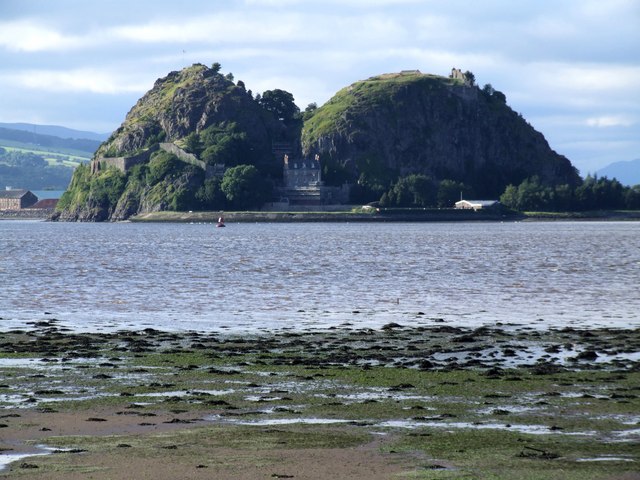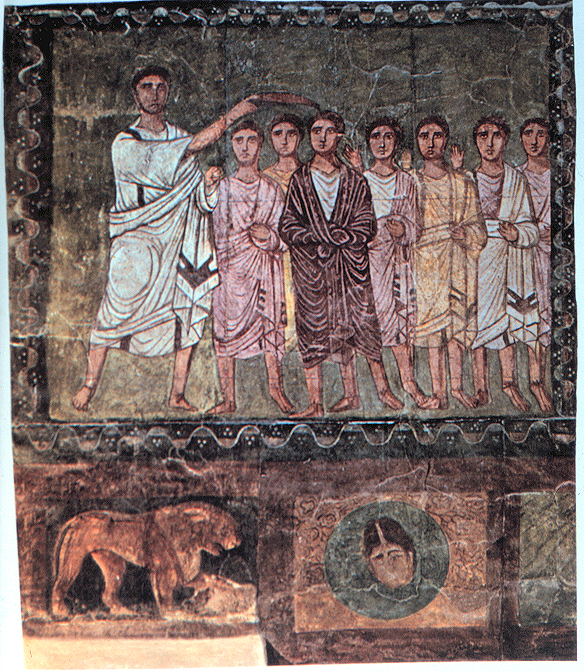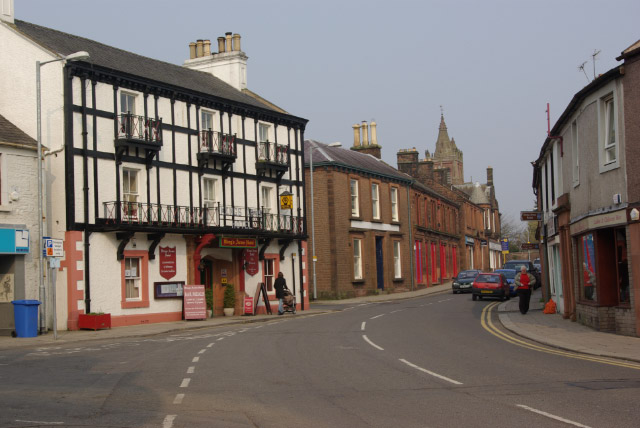|
John Maxwell, 8th Lord Maxwell
John Maxwell, 8th Lord Maxwell (24 April 1553 – 7 December 1593) was a Scottish Catholic nobleman. In 1581 he was created Earl of Morton, and in 1587 he travelled to Spain where he took part in the planning of the Spanish Armada. Biography The noble House of Maxwell had held the castle of Caerlaverock near Dumfries since the 13th century, and by the mid-16th century were the most powerful family in south-west Scotland. John Maxwell was the second son of Robert Maxwell, 6th Lord Maxwell (died 13 September 1552) and his wife Beatrix Douglas, daughter of James Douglas, 3rd Earl of Morton. He was born seven months after his father's death, and succeeded as 8th Lord Maxwell at the age of two, following the death of his brother Robert at the age of four. In 1581, James Douglas, 4th Earl of Morton, was convicted of the murder of Lord Darnley in 1567 and executed, and his titles forfeit. On 29 October 1581, James Maxwell was created Earl of Morton, with the subsidiary title L ... [...More Info...] [...Related Items...] OR: [Wikipedia] [Google] [Baidu] |
Earl Of Morton
The title Earl of Morton was created in the Peerage of Scotland in 1458 for James Douglas of Dalkeith. Along with it, the title Lord Aberdour was granted. This latter title is the courtesy title for the eldest son and heir to the Earl of Morton. The family seat is Dalmahoy Farms, Morton near Kirknewton, West Lothian. History Douglases of Dalkeith The Douglases of Dalkeith are descended from Andrew Douglas of Hermiston (or ''Herdmanston'') (d.b. 1277), younger son of Archibald I, Lord of Douglas (fl. c. 1198–1238). He was succeeded by his son William Douglas of Hermiston, a signatory of the Ragman Roll in 1296. William of Hermiston's son, James Douglas of Lothian succeeded his father and produced two sons, Sir William Douglas and Sir John Douglas. Sir William Douglas, known as the ''Knight of Liddesdale'' or the ''Flower of Chivalry'' obtained the privileges of the barony of Dalkeith, in Midlothian, in 1341, and the barony of Aberdour, in Fife, in 1342. Following his murd ... [...More Info...] [...Related Items...] OR: [Wikipedia] [Google] [Baidu] |
David Masson
David Mather Masson LLD DLitt (2 December 18226 October 1907), was a Scottish academic, supporter of women's suffrage, literary critic and historian. Biography He was born in Aberdeen, the son of William Masson, a stone-cutter, and his wife Sarah Mather. David was educated at Aberdeen Grammar School under Dr. James Melvin and at Marischal College, University of Aberdeen. Intending to enter the Church, he proceeded to Edinburgh University, where he studied theology under Dr. Thomas Chalmers, with whom he remained friendly until the latter's death in 1847. However, abandoning his aspirations to the ministry, be returned to Aberdeen to undertake the editorship of the ''Banner'', a weekly paper devoted to the advocacy of Free Kirk principles. After two years he resigned this post and went back to Edinburgh to pursue a purely literary career. There he wrote a great deal, contributing to '' Fraser's Magazine'', '' Dublin University Magazine'' (in which appeared his essays ... [...More Info...] [...Related Items...] OR: [Wikipedia] [Google] [Baidu] |
Handfasting
Handfasting is a traditional practice that, depending on the term's usage, may define an unofficiated wedding (in which a couple marries without an officiant, usually with the intent of later undergoing a second wedding with an officiant), a betrothal (an engagement in which a couple has formally promised to wed, and which can be broken only through divorce), or a temporary wedding (in which a couple makes an intentionally temporary marriage commitment). The phrase refers to the making fast of a pledge by the shaking or joining of hands. The terminology and practice are especially associated with Germanic peoples, including the English and Norse, as well as the Scottish Gaels. As a form of betrothal or unofficiated wedding, handfasting was common up through Tudor England; as a form of temporary marriage, it was practiced in 17th-century Scotland and has been revived in Neopaganism. Sometimes the term is also used synonymously with "wedding" or "marriage" among Neopagans t ... [...More Info...] [...Related Items...] OR: [Wikipedia] [Google] [Baidu] |
Regent Morton
James Douglas, 4th Earl of Morton (c. 1516 – 2 June 1581, aged 65) was the last of the four regents of Scotland during the minority of King James VI. He was in some ways the most successful of the four, since he won the civil war that had been dragging on with the supporters of the exiled Mary, Queen of Scots. However, he came to an unfortunate end, executed by means of the Maiden, a predecessor of the guillotine. Biography Early life James Douglas was the second son of Sir George Douglas of Pittendreich, Master of Angus, and Elizabeth Douglas, daughter of David Douglas of Pittendreich. He wrote that he was over 61 years old in March 1578, so was probably born around 1516. Before 1543 he married Elizabeth, daughter of James Douglas, 3rd Earl of Morton, and became known as the "Master of Morton". In 1553 James Douglas succeeded to the title and estates of his father-in-law, including Dalkeith House in Midlothian and Aberdour Castle in Fife. Elizabeth Douglas suffered from ... [...More Info...] [...Related Items...] OR: [Wikipedia] [Google] [Baidu] |
Marian Civil War
The Marian civil war in Scotland (1568–1573) was a period of conflict which followed the abdication of Mary, Queen of Scots, and her escape from Lochleven Castle in May 1568. Those who ruled in the name of her infant son James VI fought against the supporters of the Queen, who was exiled in England. Edinburgh Castle, which was garrisoned in her name, became the focus of the conflict and surrendered only after an English intervention in May 1573. The conflict in 1570 was called an "intestine war in the bowels of this commonwealth", and the period was called soon after an "intestine war driven by questions against authority." Queen's men and King's men The supporters of Queen Mary had popular international support for what was seen as the legitimate cause of supporters of an unjustly deposed monarch. The King's party claimed that their cause was a war of religion, like that in France, and that they were fighting for the Protestant cause. Mary had escaped from her imprisonment in ... [...More Info...] [...Related Items...] OR: [Wikipedia] [Google] [Baidu] |
David Douglas, 7th Earl Of Angus
David (; , "beloved one") (traditional spelling), , ''Dāwūd''; grc-koi, Δαυΐδ, Dauíd; la, Davidus, David; gez , ዳዊት, ''Dawit''; xcl, Դաւիթ, ''Dawitʿ''; cu, Давíдъ, ''Davidŭ''; possibly meaning "beloved one". was, according to the Hebrew Bible, the third king of the United Kingdom of Israel. In the Books of Samuel, he is described as a young shepherd and harpist who gains fame by slaying Goliath, a champion of the Philistines, in southern Canaan. David becomes a favourite of Saul, the first king of Israel; he also forges a notably close friendship with Jonathan, a son of Saul. However, under the paranoia that David is seeking to usurp the throne, Saul attempts to kill David, forcing the latter to go into hiding and effectively operate as a fugitive for several years. After Saul and Jonathan are both killed in battle against the Philistines, a 30-year-old David is anointed king over all of Israel and Judah. Following his rise to power, David ... [...More Info...] [...Related Items...] OR: [Wikipedia] [Google] [Baidu] |
John Maxwell, 9th Lord Maxwell
John Maxwell, 9th Lord Maxwell ( – 21 May 1613) was a Scottish Catholic nobleman. He escaped from Edinburgh Castle in 1607, and in 1608 shot the Laird of Johnstone. For these crimes, he was executed and his titles were forfeit. Biography The noble house of Maxwell had held the castle of Caerlaverock near Dumfries since the 13th century, and by the mid-16th century were the most powerful family in south-west Scotland. John Maxwell was the first son of John Maxwell, 8th Lord Maxwell (died 1593) and his wife Elizabeth Douglas (d.1637), daughter of the 7th Earl of Angus. His father was killed in a fight with the Johnstones of Annandale. He continued the feud – killing several Johnstones at Dalfeble in 1602 – until 1605 when he made peace with the Laird of Johnstone. His father had also been created Earl of Morton in 1581, and continued to be so styled, despite Archibald Douglas, 8th Earl of Angus (1555–1588), being confirmed as 5th Earl of Morton in 1586. John Maxwell sub ... [...More Info...] [...Related Items...] OR: [Wikipedia] [Google] [Baidu] |
Lockerbie
Lockerbie (, gd, Locarbaidh) is a small town in Dumfries and Galloway, south-western Scotland. It is about from Glasgow, and from the border with England. The 2001 Census recorded its population as 4,009. The town came to international attention in December 1988 when the wreckage of Pan Am Flight 103 crashed there following a terrorist bomb attack aboard the flight. Prehistory and archaeology In 2006, ahead of the construction of a new primary and secondary school archaeologists from CFA Archaeology under took excavations. They discovered the remains of a large (27 x 8m) Neolithic timber hall that dated to somewhere between 3950 BC to 3700 BC. The archaeologists found it was in use for some time as some of the posts had been replaced. Flax seeds were found in the timber hall showing the people were processing flax. This is an extremely rare find with only one other site in Scotland showing evidence of flax production in the Neolithic period. Like with most other Neolithic ti ... [...More Info...] [...Related Items...] OR: [Wikipedia] [Google] [Baidu] |
Blackness Castle
Blackness Castle is a 15th-century fortress, near the village of Blackness, Scotland, on the south shore of the Firth of Forth. It was built, probably on the site of an earlier fort, by Sir George Crichton in the 1440s. At this time, Blackness was the main port serving the Royal Burgh of Linlithgow, one of the main residences of the Scottish monarch. The castle, together with the Crichton lands, passed to James II of Scotland in 1453, and the castle has been crown property ever since.MacIvor, p. 6. It served as a state prison, holding such prisoners as Cardinal Beaton and the 6th Earl of Angus.MacIvor, p. 20. Strengthened by Sir James Hamilton of Finnart in the mid-16th century, the castle became one of the most advanced artillery fortifications of its time in Scotland. A century later, these defences were not enough to prevent Blackness falling to Oliver Cromwell's army in 1650. Some years after the siege, the castle was repaired, and again served as a prison and a minor ... [...More Info...] [...Related Items...] OR: [Wikipedia] [Google] [Baidu] |
Tolbooth
A tolbooth or town house was the main municipal building of a Scottish burgh, from medieval times until the 19th century. The tolbooth usually provided a council meeting chamber, a court house and a jail. The tolbooth was one of three essential features in a Scottish burgh, along with the mercat cross and the kirk (church). Etymology The word tolbooth is derived from the Middle English word ''tolbothe'' that described a town hall containing customs offices and prison cells. History Burghs were created in Scotland from the 12th century. They had the right to hold markets and levy customs and tolls, and tolbooths were originally established for collection of these. Royal burghs were governed by an elected council, led by a provost and baillies, who also acted as magistrates with jurisdiction over local crime. The tolbooth developed into a central building providing for all these functions. Most tolbooths had a bell, often mounted on a steeple, and later clocks were added. ... [...More Info...] [...Related Items...] OR: [Wikipedia] [Google] [Baidu] |
William Stewart Of Monkton
William Stewart of Monkton and Carstairs (died 1588) was a Scottish landowner and courtier. He was a son of Andrew Stewart, 2nd Lord Ochiltree and Agnes Cunningham. His elder brother was James Stewart, Earl of Arran and his sister Margaret Stewart married John Knox. According to the English diplomat Thomas Randolph, he was known as "William the Sticker." His estates were at Monkton, Ayrshire and Carstairs. Richard Musgave of Carlisle complained about goods sold at Kirkcudbright in 1581, involving Stewart. In November 1584 James VI granted him a pension from the lands of Whithorn Priory which had previously been paid to his sister-in-law, Margaret Stewart, Mistress of Ochiltree. Stewart of Monkton was Provost of Ayr in 1585. In 1585 the former royal favourite James Stewart, Earl of Arran embarked on Robert Jameson's boat carrying royal jewellery including 'Kingis Eitche', the Great H of Scotland, but he was forced to give his treasure up to another William Stewart, ... [...More Info...] [...Related Items...] OR: [Wikipedia] [Google] [Baidu] |
Threave Castle
Threave Castle is situated on an island in the River Dee, west of Castle Douglas in the historical county of Kirkcudbrightshire in the Dumfries and Galloway region of Scotland. Built in the 1370s by Archibald the Grim, it was a stronghold of the "Black Douglases", Earls of Douglas and Lords of Galloway, until their fall in 1455. For part of this time, the castle and the lordship of Galloway were controlled by Princess Margaret, daughter of King Robert III and widow of the 4th Earl. In 1449 Threave was regained by the 8th earl, Scotland's most powerful magnate, who controlled extensive lands and numerous castles. He fortified Threave with an "artillery house", a sophisticated defence for its time. The excessive power of the Black Douglas lords led to their overthrow by King James II in 1455, after which Threave was besieged and captured by the King's men. It became a royal castle, and in the 16th century hereditary responsibility for Threave was given to the Lords Maxwell ... [...More Info...] [...Related Items...] OR: [Wikipedia] [Google] [Baidu] |








